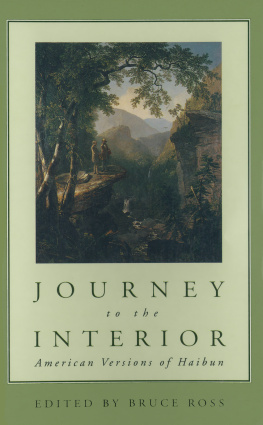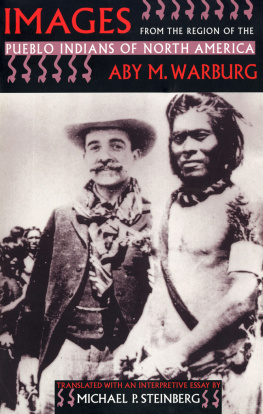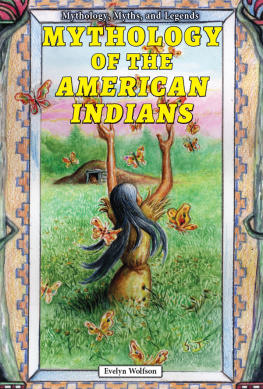A Cultural Geography of North American Indians
About the Book and Editors
A wide-ranging study, this book focuses on the effects of interaction between Indian and non-Indian peoples and on the complex relationships between Indians and their environments. Contributors confront common misconceptions about Indian groups by reexamining such controversial topics as boundary perceptions, land sharing, causes for migration, and economic conditions on Indian reservations. Issues of land claims, urbanization, patterns of economic development, and forced migration are also discussed. The information presented here is an essential component of an accurate assessment of whether North American Indians can survive as a distinct culture.
Thomas E. Ross is professor and chairman of the Department of Geology and Geography at Pembroke State University. He is coauthor of Buffer States in World Politics (Westview, 1986). Tyrel G. Moore teaches in the Department of Geography and Earth Sciences at the University of North Carolina, Charlotte.
A Cultural Geography of North American Indians
edited by
Thomas E. Ross
and Tyrel G. Moore
First published 1987 by Westview Press, Inc.
Published 2018 by Routledge
52 Vanderbilt Avenue, New York, NY 10017
2 Park Square, Milton Park, Abingdon, Oxon OX14 4RN
Routledge is an imprint of the Taylor & Francis Group, an informa business
Copyright 1987 Taylor & Francis
All rights reserved. No part of this book may be reprinted or reproduced or utilised in any form or by any electronic, mechanical, or other means, now known or hereafter invented, including photocopying and recording, or in any information storage or retrieval system, without permission in writing from the publishers.
Notice:
Product or corporate names may be trademarks or registered trademarks, and are used only for identification and explanation without intent to infringe.
Library of Congress Catalog Card Number: 87-50529
ISBN 13: 978-0-367-01410-0 (hbk)
To Professor Edwin H. Hammond
Our mentor, our friend
Contents
, Thomas E Ross and Tyrel G. Moore
Part One
North American Indians in Historical Perspective
, Donald J. Ballas
, David K. Eliades
Part Two
Spatial Awareness and Organization of the Land
, Patricia Albers and Jeanne Kay
, G. Maicolm Lewis
Part Three
Land Ownership and Economic Development
, Claudia Notzke
, Ronald A. Janke
, Richard H. Weil
, Jesse O. McKee
Part Four
Migration, Cultural Change and Fusion
, Victor Konrad
, Joseph T. Manzo
, Janel M. Curry-Roper
, Stephen C. Jett
Part Five
Population Studies
, Terrel Rhodes
, Elliot Mclntire
, Thomas E. Ross
, Thomas E. Ross
The protest movements of the 1960s were in many respects responsible for the increased academic interest in minority groups. They resulted in the development of courses dealing with blacks, Hispanics and American Indians in many colleges and universities. Instruction in these courses is conducted under many different conditions and in numerous academic disciplines, including geography, anthropology, history, and sociology. It is hoped that this volume, although primarily the work of geographers, would be beneficial to all disciplines dealing with American Indians.
This idea of a book about American Indians was conceived by Thomas Ross in 1983, and in 1984, with funds provided by the Pembroke State University Faculty Research and Development Fund, work began on the project. The objectives of this volume are to provide original works that can complement textbooks of the various disciplines involved in teaching about American Indians, to expose and correct misconceptions about Indians, and to enhance academic interest and understanding of American Indians. The essays in this cultural geography are primarily concerned with the complex relationships between American Indians and the land on which they live and their relationships with Euro-Americans. Although many aspects of culture are discussed in this volume, we make no claim that this collection covers all phases of Indian culture but do believe that it is representative of Indian cultures in the United States and Canada. The omission of a particular cultural trait or Indian group should not be taken to mean that we value any trait or group less than those we have included.
We gratefully acknowledge the cooperation of all authors whose works are included in this book. Thanks must also go to those who initially were involved but were unable to continue to participate. Much appreciation is due colleagues who gave encouragement and suggestions. We are especially indebted to Cheryl Ross, who so conscientiously proofread the entire typeset manuscript and performed innumerable clerical duties without which this volume would still be unpublished. Thanks also to Patricia Moore and the Ross daughters, Candace and Laura, for being so understanding during the development of this volume. We appreciate the work done by Betty Evans, Alice Britt, and Roy Barnhill in the typesetting and layout of this book. We are grateful to Westview Press editors Barbara Ellington and Bruce Kellison for their assistance with this volume. Bruce, thanks for being so kind and for efficiently handling details with which we were unfamiliar.
Thomas E. Ross
Pembroke State University
Tyrel G. Moore
University of North Carolina at Charlotte
Acknowledgements
The editors wish to express their thanks to the following for permission to reproduce illustrations:
The Edward E. Ayer Collection, The Newberry Library, for .
Chapter 1
Indians in North America
Thomas E. Ross
and
Tyrel G. Moore
The cultural geography of North America's Indians and suggests that the excess was a method by which the land was allowed to "rest." At the time of contact, few Euro-Americans were prepared to follow this practice.
Another difference involved the concept of land ownership. The Indian view of land made individual rights subordinate to those of the group or tribe; individuals should be governed by a sense of compatibility with others in the tribe. Land was cherished by the group, and was not to be divided for the use of only one or a few individuals. The idea of individual land ownership was so alien to the Indians that it placed them at a significant disadvantage in comprehending the culture of their Euro-American counterparts. More important, the aversion to individual ownership weakened the Indian's position in challenges with non-Indians who argued that individual ownership represented a more legitimate claim to contested lands.
Europeans approached North America's lands with a markedly different perspective. Guided in part by Western religious thought which held that man should, among other things, go forth, multiply and subdue the earth, immigrants set out to permanently settle the eastern woodlands of North America. As the Euro-American population grew in numbers and became more detached from western Europe, philosophies shifted toward social and economic change. Access to and ownership of land removed many of the immigrants from the socio-economic stratification of Europe, producing a set of American landscape values which culminated in the establishment of family farms, each much like the other. Dispersed farmsteads, a marked departure from European antecedents, became the dominant rural settlement form. A level of equality, unapproachable in European society and culture became an American ideal an ideal based on individual ownership of land.









